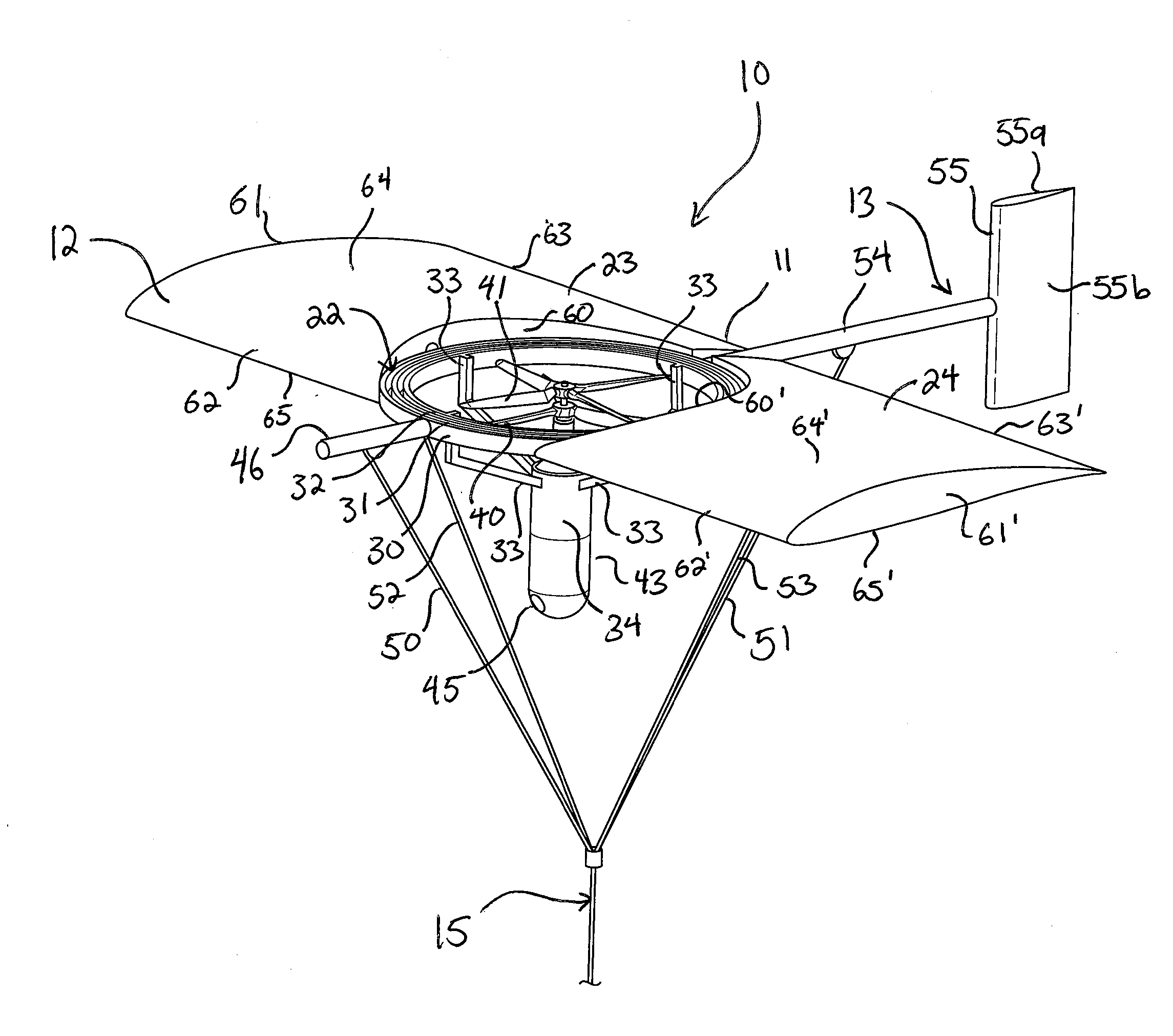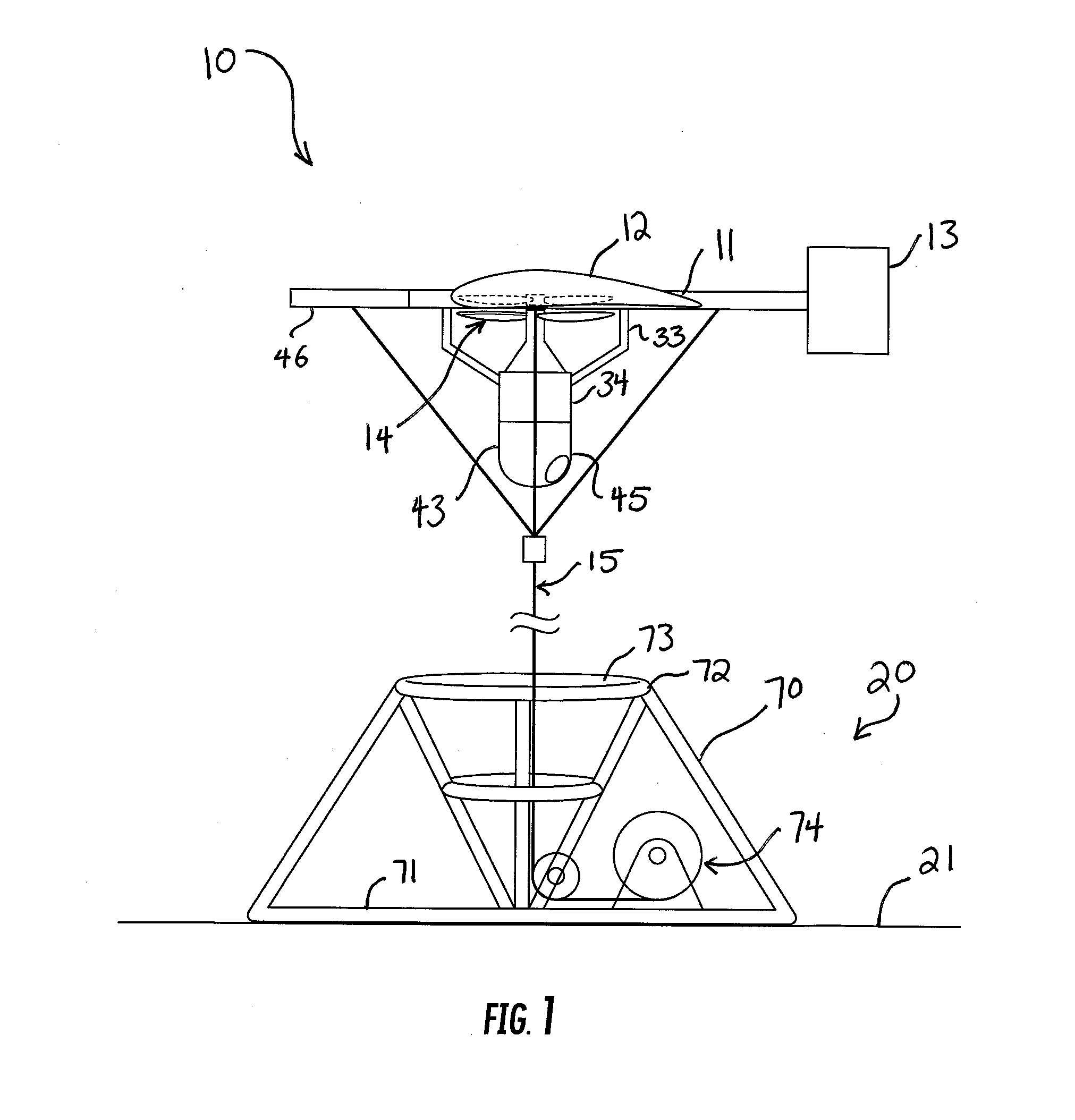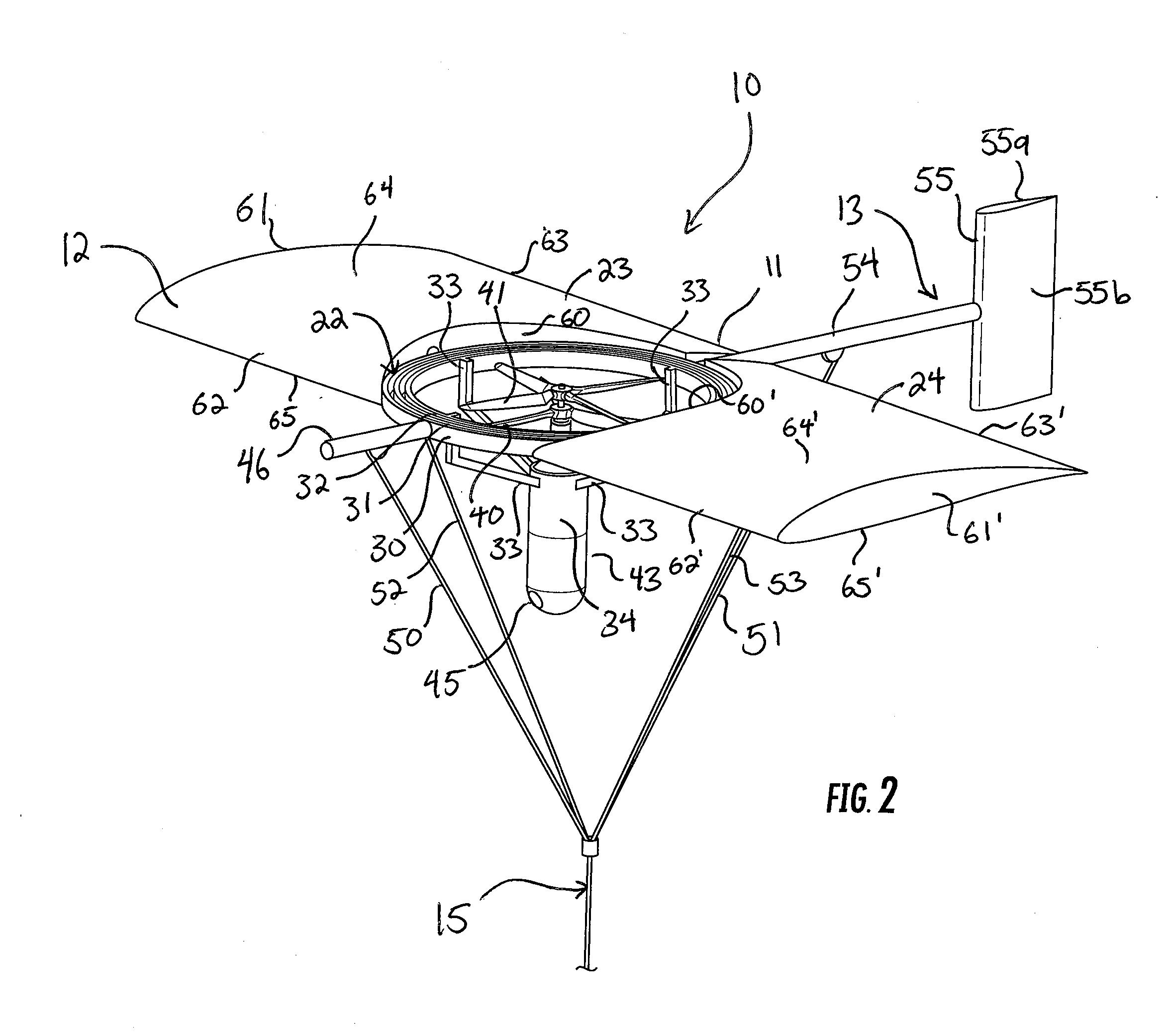Airborne Surveillance Kite
a kite and surveillance technology, applied in the field of surveillance systems, can solve the problems of aerostat drawbacks, unsuitable, and large support staff for uav operation, and achieve the effect of improving the safety of passengers and crew, reducing the risk of accidents, and improving safety
- Summary
- Abstract
- Description
- Claims
- Application Information
AI Technical Summary
Benefits of technology
Problems solved by technology
Method used
Image
Examples
Embodiment Construction
[0015]Reference now is made to the drawings, in which the same reference characters are used throughout the different figures to designate the same elements. FIG. 1 is a generalized side elevation view of a deployable, airborne surveillance system referred to as a “kite”10. As shown throughout the drawings, the kite 10 is a tethered airborne surveillance system for providing remote surveillance of an area from a range of heights by collecting a variety of information and communicating such information to a receiver such as a ground base. Very basically, the kite 10 includes a framework 11, a large fixed wing 12, a tail 13, and a propeller assembly 14 providing vertical lift to the kite 10. The kite 10 is coupled, via a tether assembly 15, to a secure base or dock 20 to fix the kite 10 to a location 21 for surveillance of the location 21 and areas around the location 21. FIG. 1 shows kite 10 in a scale of its own, but not to scale with the dock 20. Additionally, the ether 15 is fores...
PUM
 Login to View More
Login to View More Abstract
Description
Claims
Application Information
 Login to View More
Login to View More - R&D
- Intellectual Property
- Life Sciences
- Materials
- Tech Scout
- Unparalleled Data Quality
- Higher Quality Content
- 60% Fewer Hallucinations
Browse by: Latest US Patents, China's latest patents, Technical Efficacy Thesaurus, Application Domain, Technology Topic, Popular Technical Reports.
© 2025 PatSnap. All rights reserved.Legal|Privacy policy|Modern Slavery Act Transparency Statement|Sitemap|About US| Contact US: help@patsnap.com



